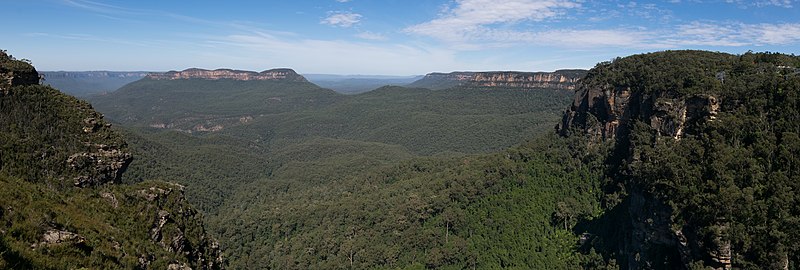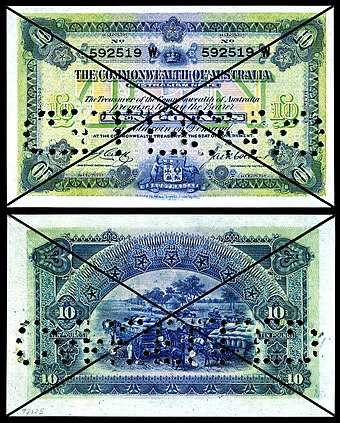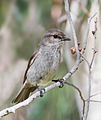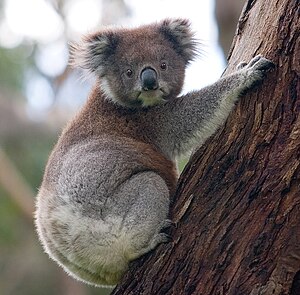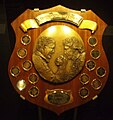Portal:Australia
| Showcase | Content | Interesting facts | Contributing |
Introduction

Australia, officially the Commonwealth of Australia, is a country comprising the mainland of the Australian continent, the island of Tasmania, and numerous smaller islands. Australia is the largest country by area in Oceania and the world's sixth-largest country. Australia is the oldest, flattest, and driest inhabited continent, with the least fertile soils. It is a megadiverse country, and its size gives it a wide variety of landscapes and climates, with deserts in the centre, tropical rainforests in the north-east, tropical savannas in the north, and mountain ranges in the south-east.
The ancestors of Aboriginal Australians began arriving from south-east Asia 50,000 to 65,000 years ago, during the last glacial period. They settled the continent and had formed approximately 250 distinct language groups by the time of European settlement, maintaining some of the longest known continuing artistic and religious traditions in the world. Australia's written history commenced with European maritime exploration. The Dutch were the first known Europeans to reach Australia, in 1606. British colonisation began in 1788 with the establishment of the penal colony of New South Wales. By the mid-19th century, most of the continent had been explored by European settlers and five additional self-governing British colonies were established, each gaining responsible government by 1890. The colonies federated in 1901, forming the Commonwealth of Australia. This continued a process of increasing autonomy from the United Kingdom, highlighted by the Statute of Westminster Adoption Act 1942, and culminating in the Australia Acts of 1986.
Australia is a federal parliamentary constitutional monarchy comprising six states and ten territories: the states of New South Wales, Victoria, Queensland, Tasmania, South Australia and Western Australia; the major mainland Australian Capital Territory and Northern Territory; and other minor or external territories. Its population of nearly 27 million is highly urbanised and heavily concentrated on the eastern seaboard. Canberra is the nation's capital, while its most populous cities are Sydney, Melbourne, Brisbane, Perth and Adelaide, which each possess a population of at least one million inhabitants. Australian governments have promoted multiculturalism since the 1970s. Australia is culturally diverse and has one of the highest foreign-born populations in the world. Its abundant natural resources and well-developed international trade relations are crucial to the country's economy, which generates its income from various sources: predominantly services (including banking, real estate and international education) as well as mining, manufacturing and agriculture. It ranks highly for quality of life, health, education, economic freedom, civil liberties and political rights.
Featured article -

Selected biography -
Norman Selfe (9 December 1839 – 15 October 1911) was an Australian engineer, naval architect, inventor, urban planner and outspoken advocate of technical education. After emigrating to Sydney with his family from England as a boy he became an apprentice engineer, following his father's trade. Selfe designed many bridges, docks, boats, and much precision machinery for the city. He also introduced new refrigeration, hydraulic, electrical and transport systems. For these achievements he received international acclaim during his lifetime. Decades before the Sydney Harbour Bridge was built, the city came close to building a Selfe-designed steel cantilever bridge across the harbour after he won the second public competition for a bridge design. (Full article...)
Did you know (auto-generated) -
- ... that a newspaper in Kentucky reported that the solar eclipse of November 22, 1900, would pass over Austria instead of Australia?
- ... that starting at age 16, future Woolworths CEO Brad Banducci was named top sewing machine salesperson three years in a row?
- ... that Barcroft Boake, the author of one of Australia's most anthologised poems, hanged himself with a stockwhip a few months after it was published?
- ... that Australian senator Ben Small had been a ship's officer, bar owner, paramedic, ambulance trainer, and logistician before entering politics?
- ... that South Australian Labor premier Des Corcoran was mentioned in despatches for courage and skill in evacuating casualties during the Korean War?
- ... that the only ever hijacking of a Royal Australian Air Force aircraft began at Baucau Airport, East Timor, in 1975?
- ... that George Jenkins was described in 1901 as "the happiest, proudest, most important and most worried individual" in Australia, but 90 years later as "a lazy, dictatorial, unctuous opportunist"?
- ... that Australian Madeleine Steere played water polo professionally in Turkey after studying biomolecular science in the United States?
In the news
- 2 July 2024 –
- Australia issues statements to several social media and search engine websites ordering the websites to draft and enforce guidelines to prevent minors from seeing inappropriate material before October 3 or face national restrictions. (Reuters)
- 1 July 2024 –
- The Australian Government increases the visa fee for international students from A$710 (US$473) to A$1,600 (US$1,068) in an attempt to reduce record levels of migration that have increased pressure on the Australian housing market. (Reuters)
- Sam Mostyn is sworn in as the 28th Governor-General of Australia. (ABC News Australia)
- 24 June 2024 –
- WikiLeaks founder Julian Assange enters a plea deal with the U.S. Justice Department, in which he will be found guilty on one federal charge in exchange for his release back to Australia. (ABC News)
- 10 June 2024 – Israel–Hamas war
- The United States Consulate General in Sydney, Australia, is vandalized by a pro-Palestinian activist. (NBC News)
- 22 May 2024 – 2024 New Caledonia unrest
- Australia and New Zealand begin evacuating their citizens from New Caledonia amid civil unrest. (AP)
Selected pictures -
On this day

- 1969 – Three thousand protesters against the Vietnam War rally outside the US Consulate in Melbourne.
- 1975 – Juanita Nielsen disappears, allegedly kidnapped and murdered.
- 1986 – After 10 years in power, Neville Wran resigns as Premier of New South Wales and is replaced by Barrie Unsworth.
- 1991 – Chinese-Australian heart surgeon Victor Chang was murdered in Sydney.
- 2002 – American Steve Fossett completes his solo balloon navigation of the world landing in Durham Downs, Queensland.
General images
Topics
More portals
WikiProject
 |
 |
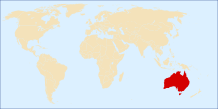
| |
Consider joining WikiProject Australia, a WikiProject dedicated to improving Wikipedia's coverage of topics related to Australia. The project page and its subpages contain suggestions on formatting and style of articles, which can be discussed at the project's notice board. To participate, simply add your name to the project members page.
As of 4 July 2024, there are 203,585 articles within the scope of WikiProject Australia, of which 594 are featured and 880 are good articles. This makes up 2.97% of the articles on Wikipedia, 5.45% of all featured articles and lists, and 2.21% of all good articles (see WP:AUSFG). Including non-article pages, such as talk pages, redirects, categories, etcetera, there are 519,650 pages in the project.
Associated Wikimedia
The following Wikimedia Foundation sister projects provide more on this subject:
-
Commons
Free media repository -
Wikibooks
Free textbooks and manuals -
Wikidata
Free knowledge base -
Wikinews
Free-content news -
Wikiquote
Collection of quotations -
Wikisource
Free-content library -
Wikiversity
Free learning tools -
Wikivoyage
Free travel guide -
Wiktionary
Dictionary and thesaurus

